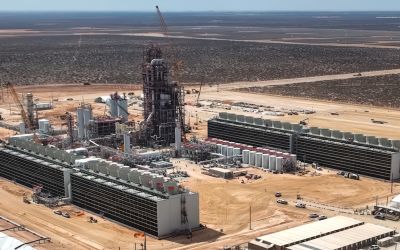Terry Heymann on how the gold mining sector is adapting ESG practices
Ahead of the hybrid edition of the Sustainable Investment Forum North America 2020 on 23rd September in New York, we caught up with Terry Heymann, Chief Financial Officer at the World Gold Council, who leads the organization’s ESG initiatives, to discuss how the gold mining sector is adapting ESG practices.

Ahead of the hybrid edition of the Sustainable Investment Forum North America 2020 on 23rd September in New York, we caught up with Terry Heymann, Chief Financial Officer at the World Gold Council, who leads the organization’s ESG initiatives, to discuss how the gold mining sector is adapting ESG practices.
Describe gold as an investment asset. What makes it unique from other asset classes?
Gold is unique in a number of ways. Gold benefits from diverse sources of demand: as an investment, a reserve asset, a luxury good and a technology component. It is highly liquid, no one’s liability, carries no credit risk, and is scarce, historically preserving its value over time.
In the last two decades, investment demand for gold has grown by an average of 15% per year driven by a number of factors including economic expansion in emerging markets, enhanced access through the advent of products like gold-backed ETFs, a renewed focus on risk management following the financial crisis, monetary policy and central bank demand.
Long known for its safe haven properties, many investors are drawn to gold’s role as a diversifier – due to its low correlation to most mainstream assets – and as a hedge against systemic risk and stock market fluctuations. Today, we are seeing that gold’s risk mitigation attributes may also play a role in helping balance the climate change impacts of other asset classes. Gold has also historically delivered returns not only in periods of turmoil but in positive markets as well --- even outperforming key asset classes.
More information on gold’s drivers and performance is available on our data site, goldhub.com.
World Gold Council published a report looking at climate change risk which found that adding gold to a mainstream investment portfolio may reduce its overall carbon footprint. Can you please elaborate?
In 2019, we put out a report called Gold and Climate Change: Current and Future Impacts which looked at three areas: gold’s current carbon footprint, a potential pathway to get to net zero by 2050 and the role that gold can play as a climate risk mitigating asset.
Our report found that the majority of greenhouse gas emissions occur at the mine site. Once mined however, there are virtually no emissions associated with gold. This makes it clear what the gold industry needs to do to decarbonize, given that the overwhelming focus is on the energy used during the mining process. With increasing developments in renewable energy and energy storage solutions leading to significantly lower costs of adopting these technologies, it is credible to believe that the entire gold sector will be able to transition to net- zero carbon by 2050.
Moreover, when we directly modeled how different asset classes may be impacted by rising temperatures at 2° C, 3° C or 4° C, gold performed well relative to other mainstream assets. In short, gold is likely to be more resilient to the impacts of climate change than other asset classes. This underscores that gold’s safe haven and risk mitigation attributes extend beyond just market or geopolitical risk.
How is the gold mining sector adapting ESG practices?
The gold mining sector is very committed to operating in line with high ESG practices. Responsible gold mining makes a very significant contribution to improving lives of people around the world.
Last year, we launched the Responsible Gold Mining Principles (RGMPSs), an overarching framework which sets out clear expectations to investors, consumers and downstream users as to what constitutes responsible gold mining. The RGMPs set out a commitment to operate at high standards in those environmental, social and governance areas which are most important for gold mining. The RGMPs include ten thematic areas and 51 individual principles, which all implementing companies need to conform to. They are designed to support and build on existing approaches covering different aspects of gold mining. This initiative has been led by our Members, the world’s leading gold mining companies.
Specifically, in regards to climate, many of our Members are also reducing their carbon footprint through improvements in energy efficiency and, where possible, transition to low carbon energy sources. This ranges from the first all-electric mine to installation of solar panels and the use of hydropower to keep emissions low.
What is the gold mining industry’s progress in implementing the Responsible Gold Mining Principles?
All of our Members are committed to the Responsible Gold Mining Principles and we hope that other gold mining companies will also adopt them. All implementing companies need to publicly disclose their performance and receive independent assurance on this disclosure. Given that we have set the bar quite high, we have set out a three year implementation period as many of the gold mining companies are already incorporating best ESG practices but may not necessarily have the formal systems and processes in place to demonstrate this to a third-party. In the first year, all implementing companies are required to set out their commitment to the RGMPs and undertake a GAP assessment. Many gold mining companies are already adhering to numerous other laws, standards and codes that relate to ESG performance; we are currently working with our members to clarify equivalencies with other approaches and support aligned assurance processes.
Terry Heymann will be sharing further insights during the hybrid edition of the Sustainable Investment Forum North America 2020 on 23 September during Climate Week NYC. Find out more here.






